Can You Soundproof A Room Without Damaging Walls?
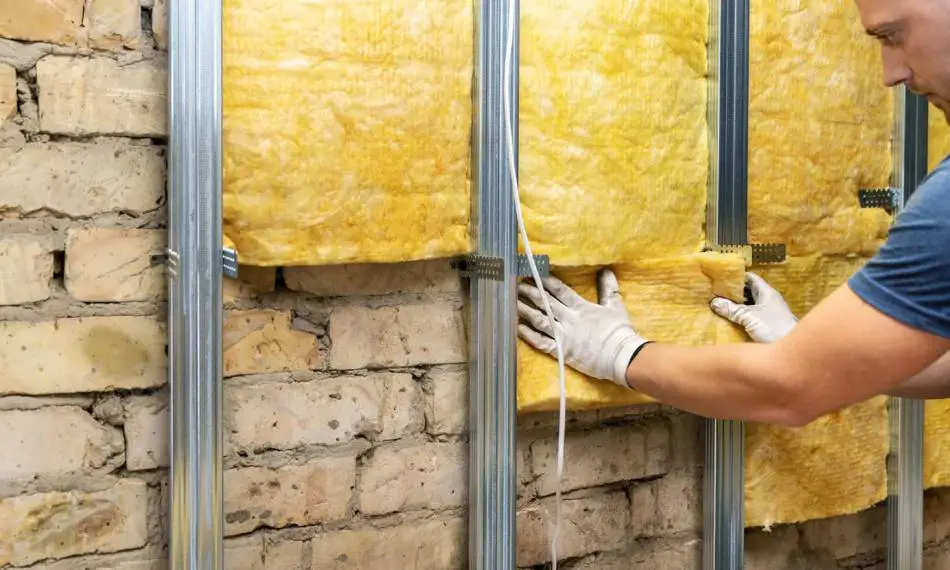
Do you ever feel like the noise levels in your home or apartment are out of control? Maybe you live in a loud part of the city with a lot of traffic, or your neighbors are particularly loud, and it’s starting to interfere with your work, relaxation, or sleep.
While it might seem like the only solution is to resort to drastic measures, such as tearing down walls or moving to a new place, there are ways to soundproof a room without damaging the walls. In this article, we’ll explore some effective and cheap soundproofing methods, allowing you to enjoy a quieter and more peaceful living space. So, let’s start!
Can You Soundproof A Room Without Damaging Walls? Yes, it is possible to soundproof a room without damaging the walls. There are several methods to apply, such as adding sound-absorbing materials like curtains, rugs, and acoustic panels to your room, sealing gaps and cracks around windows and doors, and using soundproof curtains or blankets.
Adding carpets, acoustic underlay, or suspended ceiling systems can also reduce noise transmission in your room through floors and ceilings. Additionally, you can use white noise machines or sound masking techniques to mask outside noise and create a more peaceful environment.
Easy Ways To Soundproof A Room Without Damaging Walls
If you have a problem with unwanted noise, whether from the outside world or within your own home, it can be difficult to get the rest and relaxation you need. While it may seem like a complicated and expensive process to soundproof a room without damaging the walls, there are simple and effective methods you can try. Here is what you can do:
1. Soundproof Curtains
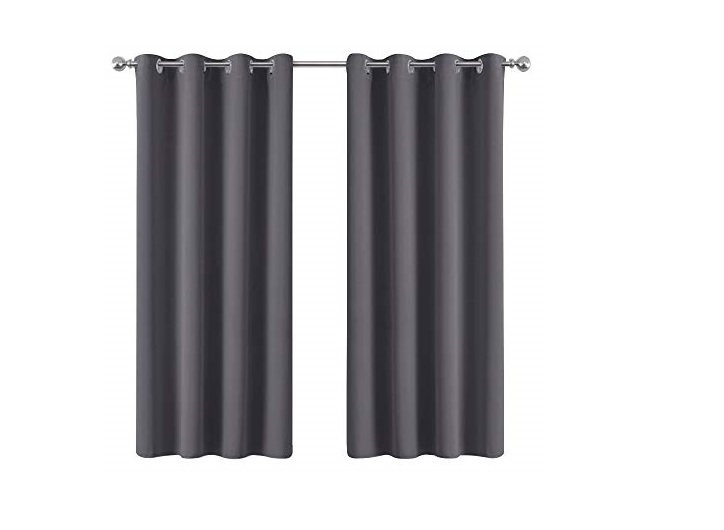
> Buy Soundproof Curtains HERE <
Soundproof curtains offer a good solution to the problem of moderate noise levels. Whether the noise is coming from a busy street or a noisy neighbor, soundproof curtains can be hung over windows and walls without modifying the walls. These dense curtains absorb frequency sounds, reducing their reach before they can bother you.
Combining soundproof curtains and blankets can significantly reduce unwanted sound without damaging walls or ceilings simply by hanging them on free-standing rods.
Related Article: How To Soundproof A Bedroom Wall Cheap? Explained
2. Window Inserts
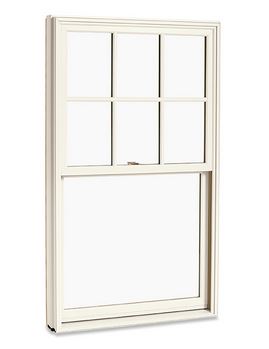
For those who are dealing with loud outdoor sounds, such as traffic noise, construction, or barking dogs, the issue might be in your windows. Soundproofing exterior walls often begin with the windows, as they are one of the primary access points for outside noise.
Replacing your windows with double-glazed panes can effectively reduce outside noise, but it’s a costly and time-consuming process that requires professional installation.
Instead, you can opt for window inserts, which offer similar soundproofing advantages as new windows, but at a fraction of the cost. With easy DIY installation, window inserts are a great solution for soundproofing without damaging your walls.
3. Reinforce Room Door
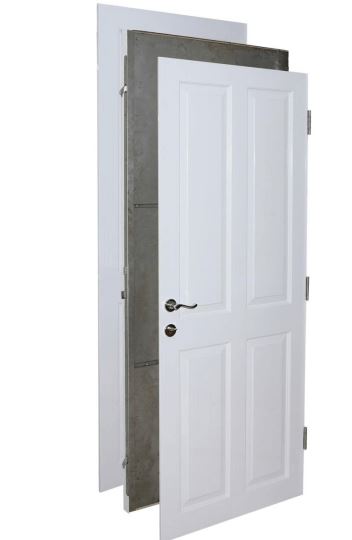
When it comes to soundproofing a room, doors are usually a weak point that allows noise to travel in and out. Room doors are usually thin and lightweight, providing little to no soundproofing benefits. If you’re not ready to replace the door, there are a few DIY tricks that you can try to increase its mass and soundproofing capabilities.
You can do the following: for hollow doors, filling the cavity with rubber or sand can help. Applying mass-loaded vinyl is an affordable and effective solution that doesn’t require major renovations or drywall removal for solid doors that just need additional mass.
Related Article: Is Styrofoam Good For Soundproofing?
Add Mass To Walls For Better Soundproofing
If you want to soundproof a room without damaging walls, simply blocking out noise may not be enough. For those who are dealing with high noise levels, adding mass to your walls is the most effective way to prevent sound from passing through.
While this may seem daunting and requires opening up your walls, several easy ways exist to add mass and soundproof walls without causing any damage. Here are some simple yet effective ways that you can use to soundproof walls without removing drywall.
4. Add Drywall To Walls
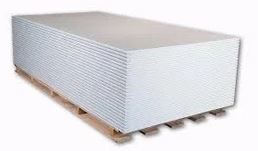
Adding drywall to the wall is one of the simplest and most effective methods of soundproofing without causing any damage to walls. By installing an extra layer of drywall over existing walls, you can easily increase the mass of the wall.
If you want to get even better results at soundproofing, you can use materials like mass-loaded vinyl or green glue between the layers of drywall.
Green Glue

Adding a layer of green glue between the two layers is a straightforward solution when enhancing the soundproofing capabilities of your additional drywall layer. By acting as a sound barrier, green glue absorbs the vibrational energy produced by sound and converts it into heat energy before the vibrations can reach the base layer.
This limits the amount of sound that can travel through the wall. If you’re searching for ways to prevent the transmission of vibrations through walls, applying a damping material can do the job effectively.
Related Article: Are Landlords Responsible For Soundproofing?
Mass-Loaded Vinyl (MLV)
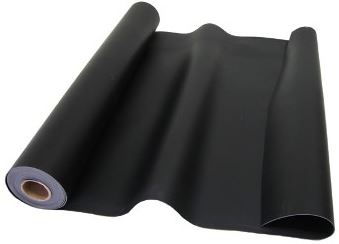
> Buy Mass-Loaded Vinyl HERE <
When it comes to soundproofing without causing any damage to your walls, using mass-loaded vinyl (MLV) is another effective method that can be used. MLV is available in rolls and can be conveniently rolled out and applied to the walls and ceilings without causing damage.
Its exceptional density makes it an excellent material for covering gaps or cracks that allow sound to pass through the wall. Sandwiching MLV between two layers of drywall is the most effective way to enhance the soundproofing of walls.
5. Build Additional Room Within the Room
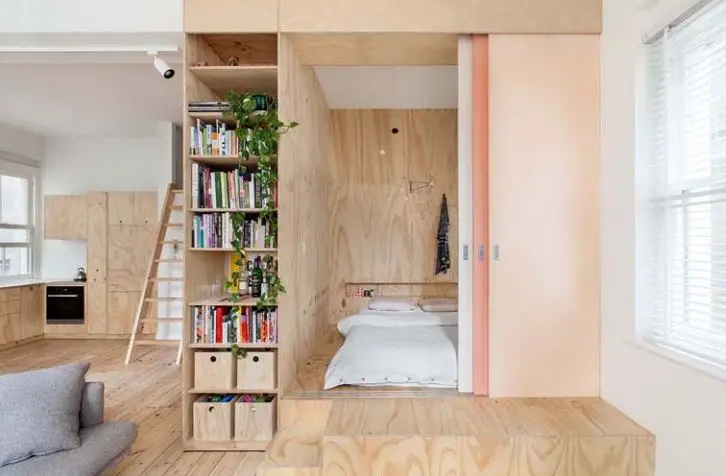
For those seeking a higher level of soundproofing without damaging walls, constructing a separate room inside the existing room is a great option. While many wall decoupling methods necessitate opening up existing walls, constructing a separate structure allows you to achieve the same level of noise reduction without the need for demolition.
This soundproofing technique involves using normal drywall and fiberglass insulation to make a wall that will lower the noise between rooms.
If you opt for this solution, remember that it is a significantly more challenging task than the other methods we cover in this article. Hence, it is essential to seek professional help to ensure the desired level of noise reduction is achieved.
Related Article: How Does Noise Cancelling Foam Work?
Reduce Noise Level Within the Room
When you want to soundproof a room without damaging the walls, it’s important to consider the sources of noise that come from inside the room. Reducing the noise within the room is an excellent way to enhance the effectiveness of your soundproofing efforts.
Although turning down the volume is one way to do this, it’s not always practical, especially when you need high-quality sound for listening music or watching movies. To complement soundproofing methods that involve adding mass, it’s also crucial to incorporate acoustical treatments that can reduce noise levels and optimize sound quality in the room.
6. Acoustical Treatments
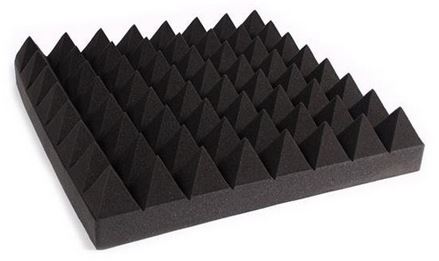
> Buy Soundproof Panels HERE <
If you have a room filled with many sound waves, the materials that make up the room can make it noisier than necessary. Smooth and reflective surfaces like metal or drywall can significantly reflect sound waves and amplify the volume. To reduce this effect, installing softer materials in the room can help.
Fabric Wrapped Acoustic Panels
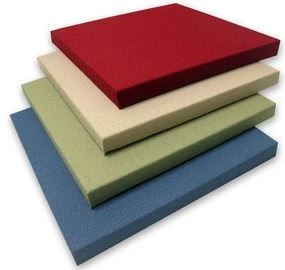
> Buy Fabric Acoustic Panels HERE <
Adding fabric materials to walls is an effective and visually appealing way to improve the acoustics in a room, and fabric-wrapped acoustic panels are a great choice for this purpose. These panels come in various designs and colors and can even be customized with artwork to fit seamlessly into the room’s decor.
Acoustic panels can also be used on the ceiling, suspended to create a dramatic visual effect, or attached directly to the ceiling. With their versatility, there are endless possibilities for incorporating acoustical panels into your design vision, all while enhancing the performance of your soundproofing measures.
Here is an interesting video that will also explain to you a way how to soundproof a room without damaging the wall:
Related Article: How to Soundproof a Garage Door? 7 Easy Ways
Things To Avoid When Soundproofing A Room
If you’re looking to soundproof a room, there are certain things you should avoid if you don’t want to do even more damage. Please avoid the following: covering the walls with egg cartons, blankets, or acoustic foam because they won’t do much to block sound, as there isn’t enough mass in those materials.
Plus, it will make your room look unappealing. Another thing to avoid is “soundproofing paint” because it has almost no effect on sound blocking. It’s just a marketing trick.
Final Thoughts
As we have discussed in this article, there are numerous ways to prevent unwanted noise from infiltrating your space without damaging the walls. Depending on your budget and noise level, you can use soundproof blankets, acoustic panels, MLV, or drywall and insulation.
Alternatively, you can select cheaper options like revamping the decor and furnishings of your room. What is desirable is that the installation process should be simple to add mass or decouple the walls without any damage.
The most preferred and effective approach is incorporating resilient channels and drywall onto the existing walls. You can effectively stop noise transmission from outside into your room by eliminating contact points. It’s worth noting that all the solutions mentioned above are quite simple to install, and you can do it yourself.
